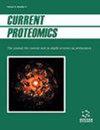基于生物信息学的SARS-CoV-2相关蛋白的极性指数法(PIM)和内在疾病易感性表征
IF 0.5
4区 生物学
Q4 BIOCHEMICAL RESEARCH METHODS
引用次数: 1
摘要
2019年底在中国出现的由感染严重急性呼吸系统综合征冠状病毒-2 (SARS-CoV-2)引起的2019年新型冠状病毒病(COVID-19)在全球爆发,是当前重大的公共卫生问题。本研究的目的是在残基水平上表征SARS-CoV-2蛋白的物理化学特性,并利用极性指数方法®(PIM®)为每个序列创建“PIM®图谱”形式的“生物信息学指纹”,适用于这些蛋白的鉴定。两种不同的生物信息学方法用于分析这些蛋白质在残基水平上的序列特征,一种是内部生物信息学系统PIM®,一套常用的预测蛋白质内在疾病易感的算法,如PONDR®VLXT, PONDR®VL3, PONDR®VSL2, PONDR®FIT, IUPred_short和IUPred_long。生成4种SARS-CoV-2结构蛋白的PIM®图谱,并与SARS-CoV-2非结构蛋白、SARS-CoV-2推定蛋白、SARS-CoV蛋白、MERS-CoV蛋白、细菌、真菌和病毒蛋白、细胞穿透肽和一组内在无序蛋白的相应图谱进行比较。我们还搜索了PIM®谱与sars - cov -2结构蛋白、非结构蛋白和推定蛋白相似的UniProt蛋白。我们发现SARS-CoV-2结构蛋白、非结构蛋白和推定蛋白具有独特的epim®特征。从UniProt数据库中“审查”的562253个蛋白中,共鉴定出1736个蛋白,其PIM®特征与SARS-CoV-2结构蛋白、非结构蛋白和推定蛋白相似。PIM®谱代表了一个重要的特征,可能对鉴定与SARS-CoV-2蛋白相似的蛋白质有用。本文章由计算机程序翻译,如有差异,请以英文原文为准。
Bioinformatics-based characterization of proteins related to SARS-CoV-2 using the Polarity Index Method® (PIM®) and Intrinsic Disorder Predisposition
The global outbreak of the 2019 novel Coronavirus Disease (COVID-19) caused by the infection with the Severe Acute Respiratory Syndrome Coronavirus-2 (SARS-CoV-2), which appeared in China at the end of
2019, signifies a major public health issue at the current time.
The objective of the present study is to characterize the physicochemical properties of the SARS-CoV-2 proteins at a residues level, and to generate a “bioinformatics fingerprint” in the form of a “PIM® profile” created for each
sequence utilizing the Polarity Index Method® (PIM®), suitable for the identification of these proteins.
Two different bioinformatics approaches were used to analyze sequence characteristics of these proteins at
the residues level, an in-house bioinformatics system PIM®, and a set of the commonly used algorithms for the predic-tion of protein intrinsic disorder predisposition, such as PONDR® VLXT, PONDR® VL3, PONDR® VSL2, PONDR®
FIT, IUPred_short and IUPred_long. The PIM® profile was generated for four SARS-CoV-2 structural proteins and
compared with the corresponding profiles of the SARS-CoV-2 non-structural proteins, SARS-CoV-2 putative proteins,
SARS-CoV proteins, MERS-CoV proteins, sets of bacterial, fungal, and viral proteins, cell-penetrating peptides, and a
set of intrinsically disordered proteins. We also searched for the UniProt proteins with PIM® profiles similar to those of
SARS-CoV-2 structural, non-structural, and putative proteins.
We show that SARS-CoV-2 structural, non-structural, and putative proteins are characterized by a unique
PIM® profile. A total of 1736 proteins were identified from the 562,253 “reviewed” proteins from the UniProt database,
whose PIM® profile was similar to that of the SARS-CoV-2 structural, non-structural, and putative proteins.
The PIM® profile represents an important characteristic that might be useful for the identification of proteins similar to SARS-CoV-2 proteins.
求助全文
通过发布文献求助,成功后即可免费获取论文全文。
去求助
来源期刊

Current Proteomics
BIOCHEMICAL RESEARCH METHODS-BIOCHEMISTRY & MOLECULAR BIOLOGY
CiteScore
1.60
自引率
0.00%
发文量
25
审稿时长
>0 weeks
期刊介绍:
Research in the emerging field of proteomics is growing at an extremely rapid rate. The principal aim of Current Proteomics is to publish well-timed in-depth/mini review articles in this fast-expanding area on topics relevant and significant to the development of proteomics. Current Proteomics is an essential journal for everyone involved in proteomics and related fields in both academia and industry.
Current Proteomics publishes in-depth/mini review articles in all aspects of the fast-expanding field of proteomics. All areas of proteomics are covered together with the methodology, software, databases, technological advances and applications of proteomics, including functional proteomics. Diverse technologies covered include but are not limited to:
Protein separation and characterization techniques
2-D gel electrophoresis and image analysis
Techniques for protein expression profiling including mass spectrometry-based methods and algorithms for correlative database searching
Determination of co-translational and post- translational modification of proteins
Protein/peptide microarrays
Biomolecular interaction analysis
Analysis of protein complexes
Yeast two-hybrid projects
Protein-protein interaction (protein interactome) pathways and cell signaling networks
Systems biology
Proteome informatics (bioinformatics)
Knowledge integration and management tools
High-throughput protein structural studies (using mass spectrometry, nuclear magnetic resonance and X-ray crystallography)
High-throughput computational methods for protein 3-D structure as well as function determination
Robotics, nanotechnology, and microfluidics.
 求助内容:
求助内容: 应助结果提醒方式:
应助结果提醒方式:


